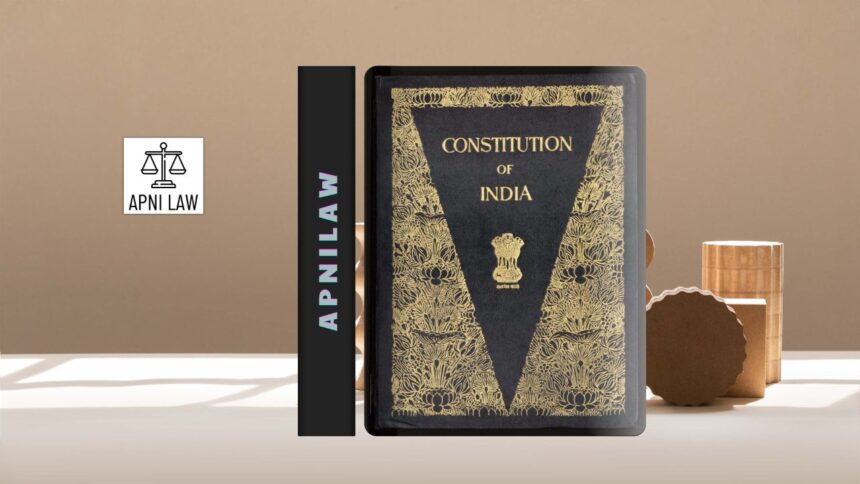Introduction
The Directive Principles of State Policy (DPSPs) are one of the most ambitious parts of the Indian Constitution. They were introduced to make sure India grows not only as a political democracy but also as a society rooted in social and economic justice. While Fundamental Rights protect individual freedoms, DPSPs guide governments in shaping policies for the welfare of all. Since they are not enforceable in courts, their role often comes under debate. Are they practical goals that drive real change, or do they remain ideals on paper? A closer look at their journey shows both successes and gaps.
Vision Behind the DPSPs
The framers of the Constitution included DPSPs in Part IV, Articles 36 to 51. These principles aim to promote equality, reduce poverty, improve health and education, and secure justice for every citizen. At the time of independence, India lacked the resources to enforce them immediately. The framers saw them as long-term goals that future governments must follow while making policies. In this way, DPSPs act like a roadmap, pointing toward a just and fair society.
Early Steps and Land Reforms
In the years after independence, India tried to turn these directives into action through land reforms. The abolition of zamindari, land ceiling laws, and tenancy reforms were based on the idea of fairness in agriculture. These reforms were inspired by the DPSPs’ call for equal distribution of resources. While they reduced the power of landlords, the impact varied across states. Strong resistance from land-owning groups and legal challenges slowed down progress. To make land reforms possible, the government had to amend the Constitution and weaken the right to property, which often stood in the way.
Right to Education as a Success Story
One of the biggest achievements of DPSPs was turning the directive on free education into a Fundamental Right. For many years, free education for children was only an aspiration. In 2002, the 86th Amendment added Article 21A, making education a right for children aged six to fourteen. This change showed how a directive could evolve into a real, enforceable right. However, problems such as poor school infrastructure, high dropout rates, and unequal standards in rural and urban areas show that more work is still needed.
Workers’ Rights and Equal Pay
The Constitution asks the State to ensure fair pay and safe working conditions. Laws like the Equal Remuneration Act of 1976 gave this principle legal backing. Over time, maternity benefits, workplace safety rules, and welfare schemes for workers strengthened these rights. Yet, the reality is uneven. Many workers in the informal sector still lack protection. Wage differences between men and women also persist despite the law. So, while progress has been made, full equality in the workplace remains a challenge.
Health, Nutrition, and Public Welfare
DPSPs also call on the State to improve nutrition and public health. Programs like the Mid-Day Meal Scheme, Integrated Child Development Services, and the National Health Mission reflect this vision. These schemes have helped children and women in particular, ensuring better access to food and healthcare. Despite these efforts, malnutrition and poor healthcare access in rural areas remain serious issues. The COVID-19 pandemic revealed how fragile India’s healthcare system still is. This shows that while the government has taken important steps, the journey is far from over.
Protecting the Environment
Environmental protection became part of the Constitution through Article 48A, which directs the State to safeguard forests and wildlife. Later laws such as the Environment Protection Act of 1986 gave this directive real force. Courts have also played a role by insisting on strong environmental safeguards. However, industrial growth, pollution, and deforestation remain major challenges. India continues to struggle to balance development with environmental sustainability.
Local Governance and Panchayati Raj
The DPSPs also emphasize the importance of village panchayats for local democracy. This became reality in 1992 through the 73rd Amendment, which gave constitutional status to Panchayati Raj Institutions. These bodies allow citizens to take part in grassroots governance. Yet, their success is mixed. Many panchayats lack funds, and their powers are often restricted by state governments. Limited awareness among people also reduces their effectiveness.
Tackling Inequality
Reducing inequality is one of the boldest goals of the DPSPs. India has tried to achieve this through reservations in education and jobs for marginalized groups, rural development programs, and poverty alleviation schemes. These steps have created opportunities for disadvantaged communities. Still, wealth and resources remain highly unequal. A small section of society controls most of the wealth, while many continue to struggle economically. This gap shows that achieving social and economic equality is still a work in progress.
Judiciary’s Role in Strengthening DPSPs
The courts have played a major role in giving DPSPs more importance. In Kesavananda Bharati (1973), the Supreme Court stressed the balance between Fundamental Rights and DPSPs. In Minerva Mills (1980), the Court said that harmony between the two is essential. In Unnikrishnan (1993), the Court expanded the scope of education as a right, influenced by the directives. Through such cases, DPSPs have gained a stronger place in governance even though they cannot be enforced directly.
FAQs
Why are DPSPs not enforceable in courts?
The framers made them non-justiciable because India did not have enough resources after independence to guarantee them immediately. They serve as guiding principles rather than binding rules.
Which DPSPs have been successfully implemented?
Examples include the right to free education, Panchayati Raj institutions, equal pay laws, and welfare programs for children and workers. However, implementation is uneven across the country.
What remains the biggest challenge in implementing DPSPs?
The gap between laws and actual ground reality. Corruption, lack of resources, and administrative hurdles prevent many directives from becoming effective.
Conclusion
The Directive Principles of State Policy remain one of the noblest features of the Indian Constitution. They reflect the dream of a society where justice, equality, and dignity are not just words but real experiences for every citizen. India has achieved significant progress in education, local governance, and social justice. Yet, gaps in implementation, inequality, and weak enforcement continue to hold back their full potential. Even though they are not enforceable in court, DPSPs continue to inspire policies and remind governments of their duty to create a fair and inclusive society.
For any specific query call at +91 – 8569843472







